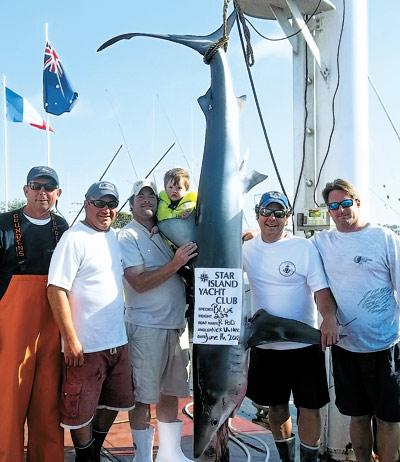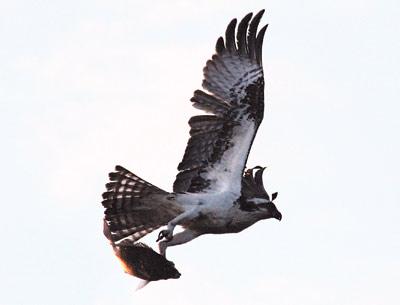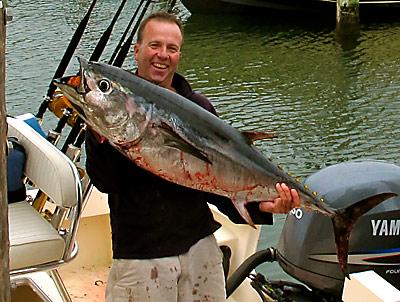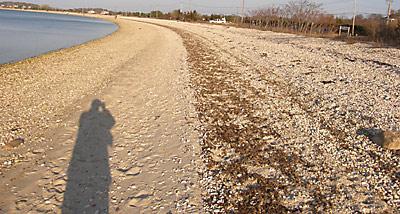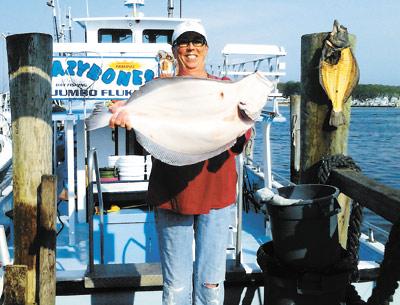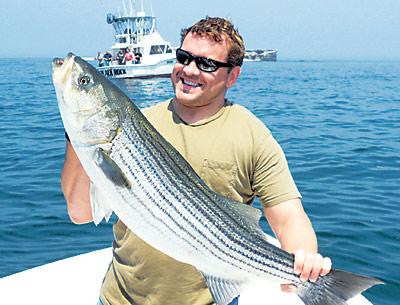Nature Notes: Here an Itch
Nature Notes: Here an Itch
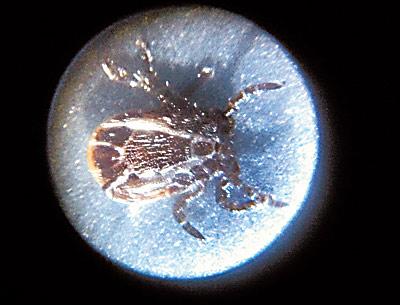
On Monday I found the first adult chigger, a k a harvest mite, climbing up the driver’s side door of my pickup truck. It was about the size of an adult deer tick and orangey. [Please see editor's note below.] Adult chiggers, themselves, are no cause for alarm, as they feed on plant material. It’s the thought of their babies that will emerge in August that distressed me, bringing to mind 26 years of annual chigger bite attacks here on the South Fork beginning in September of 1986.
In the 1980s chiggers on the South Fork were only numerous in Montauk and on Gardiner’s Island. Since then, they have become widely distributed throughout eastern Long Island. In the late 1980s lone star ticks also made their appearance in Montauk and on Gardiner’s Island and since then have spread throughout the island, becoming the dominant tick.
Why Montauk? Why Gardiner’s Island?
The two are both common in the south. Some think that the United States Department of Agriculture is responsible. Now under the watchful eye of the Department of Homeland Security, the U.S.D.A. has been studying animal diseases on Plum Island since the mid-1950s. The agency has studied both the microbes that cause diseases such as “hoof and mouth” disease and the vectors of those microbes, including mosquitoes, ticks, and other arthropods. It is probably only a coincidence that the Lone Star tick and the chigger showed up at about the same time that there were problems at the laboratory with escapes of this or that organism.
The most obvious explanation for the spread north of the Lone Star tick and chigger, as well as the deer, or black-legged, tick, is bird migration. Ticks and chiggers attach to birds just as they attach to mammals and reptiles. Mammals and reptiles don’t migrate, but most birds do, leaving the South in the late winter and early spring to go north, leaving the North in mid and late-summer to return south. Montauk happens to be one of the great stopping-off points for migratory songbirds.
Don’t just blame the deer, as people are wont to do. Yes, deer move these parasites around locally, but not in long hauls the way birds do. And other mammals nurture and distribute ticks and chiggers locally, including the most populous animal of all, Homo sapiens. Most local mammalian species, including raccoons, foxes, opossums, squirrels, mice, rats, and feral cats have greatly increased their numbers in the last 50 years. Some of these increases are episodic. Populations of foxes, raccoons, and opossums, for example, fall off when they become badly diseased. Mice and vole populations drop when predatory birds and mammals are numerous.
Bird populations have not increased by and large, with the exception of those such as the robin, starling, blue jay, titmouse, grackle, and house sparrow, which do not require wide open spaces in which to breed. Ground-breeding birds — the ones that are most likely to pick up ticks — such as towhees, hermit thrushes, and bobwhites have become less and less common over the years, but almost all birds have contact with the ground and the vegetation that grows close to it at some point in their life cycle. Perhaps the singularly most common grounded bird on the South Fork at this time is the wild turkey. I would bet that ticks infest turkeys at a fairly high rate.
Local populations of chiggers and ticks, with the possible exception of the wood, or dog, tick, show no sign of decreasing in numbers. Lyme disease caused by spirochete bacteria and babesiosis caused by an amoeba-like protozoan carried by the deer tick show no signs of abatement. One type of ehrlichiosis carried by the deer tick and another type carried by the Lone Star tick should become more common as the ticks and diseases become more widely distributed. Some people on the South Fork have had all three diseases.
Permethrin applied to clothing and shoes before entering the woods, shrubby patches, or grassy fields works well at thwarting would-be grabbing-on ticks. All local tick species would like to get to the face, particularly, to the furless ear and eye areas of mammals. Lone Star ticks are given to questing higher up on vegetation than deer ticks, as they are more specialized on deer than the deer tick, and so permethrin on the shirt as well as the pants can be helpful in discouraging them.
The most tick-prone areas are game trails, particularly those traveled by deer. Trails maintained for hikers are also places where ticks are likely to be hanging out. Not brushing against the shrubbery and grasses that invariably edge these trails is a mandatory precautionary measure.
Ticks that show up in the home on rugs and furniture are most often attributed to dogs and cats that go out and come in frequently. A high-powered vacuum cleaner going back and forth several times over the same territory will generally get even the smallest of ticks, the so-called nymphs that are the most likely to give you diseases.
Don’t just blame the deer, as people are wont to do. Yes, deer move these parasites around locally, but not in long hauls the way birds do.
August and September are the worst months of the year for ticks and chiggers. That’s when the larvae emerge from eggs deposited earlier by the females. Thus far, no diseases are attributed to chiggers and just-hatched tick larvae are clean. They can give you nasty bites but not the diseases, which they have to pick up from their mammalian hosts while feeding on them.
It would seem that the beaches and their bathing waters are the safest place to avoid ticks and chiggers. However, there are often biting green flies and the waters may contain stinging jellyfish, flatworm cercaria that cause swimmer’s itch, even a shark or two. Perhaps, the safest place in the Hamptons with respect to all biting and stinging organisms is the wooden deck, but only during breezy, sunny days, not at night, especially not humid, still nights, when mosquitoes and no-see-ums are likely to fill the air and home in on the carbon dioxide, “the bad air,” one is continually exhaling.
I guess God created parasites so that Homo sapiens wouldn’t get too smug. Not a bad idea.
—
Editor's note: The presence of chiggers on Long Island has been consistently disputed by entomologists; no evidence for a population here has been found.

